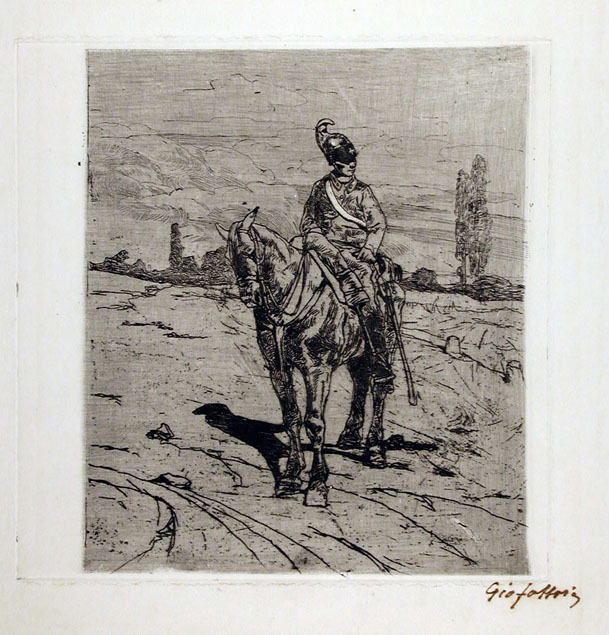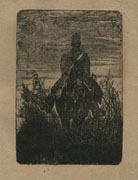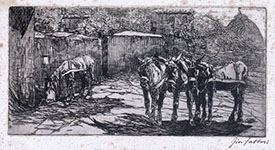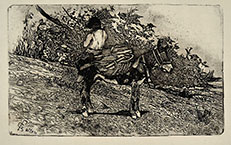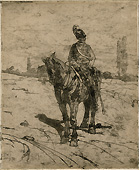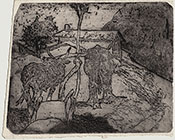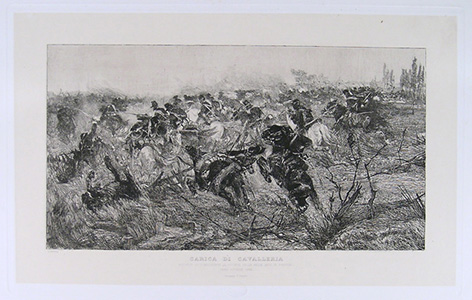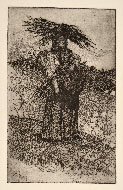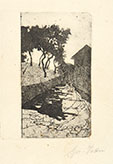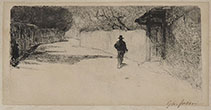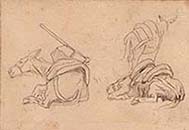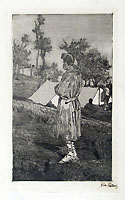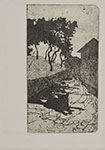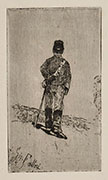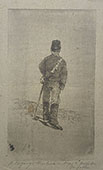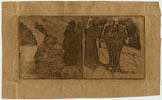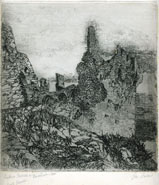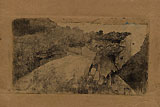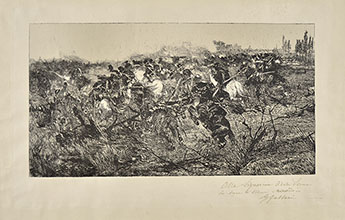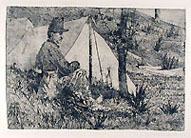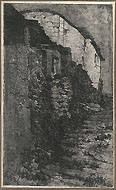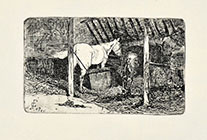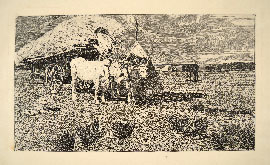(Livorno 1825 - Florence 1908)
VEDETTA (Look-out Post)
Zinc etching, Baboni-Malesci CXLIV. An apparently unique artist's proof, of an unrecorded early state, before the borderline delimiting the composition at the right and before the reduction of the plate. Printed on white wove paper with a remarkable surface tone, selectively wiped off in few areas for depicting the light. Signed in pen Gio Fattori, with strong iron gall ink. In all likelihood, this impression has been printed by Fattori himself, using the small press given to him by his friend Cristiano Banti. To the platemark 200 x 197 mm, the entire sheet measuring 290 x 259 mm. PROVENANCE: Mario Galli (his signature and inventory number 132 on the back of the frame) Florence; Ferdinando Liuzzi, Florence.
The type of signature in pen, leads to a dating in the late eighties for the execution of this etching; which in the later state shows (in addition to the reduction of the plate and to the new borderline on the right) a few new dotted areas (e.g.) and several signs of slight damages to the plate, as oxidations and scratches (e.g.). These signs of damage remind us the words, full of modesty, with which Fattori mocked his achievement of the gold medal for etching at the Exposition universelle de 1900, in Paris … Scusa, non è da ridere vedermi medagliare all’acqua forte? io incisore, ma chi l’avrebbe mai pensato?! Tutti meno che mé, e tanto è vero che le mie lastre stavano su di un armadio alla polvere e a rovinarsi e a macchiarsi. …. (letter to Fucini, 11th of July 1900).
Giovanni Fattori, possibly the most important painter of the nineteenth century in Italy, received his first instruction in drawing from a lesser painter of his native town. In 1846 Fattori moved to Florence to attend the Academy. During the 1850s Fattori joined the innovative artists, called Macchiaioli, who met at the Caffè Michelangelo in Florence and were champions of a new technique and style to contrast the conventional academic language. During those years, he still produced works that could be attributed to the historical-romantic school but his interest in studying from life also extended to landscape painting and the military life of the day became the subject of his first experiments in painting using the macchia technique. In 1867, after the death of his first wife, Fattori frequently stayed in the Maremma region which became the ideal backdrop for his works. Fattori began etching in the early 1880s, when he was nearly sixty; quite soon he was able to appreciate the difference of expression he could achieve using this new medium. A real peintre-graveur, he continued with etching his artistic research on light and essential shapes in reality.
